- Overview
- Full Itinerary
- Photo Gallery
- Costing
- Travel Details
- Trip Reports
- Guide
- Map
- Know Before You Go
- Other Trips You May Like
There's something special about New Mexico ... it really is the Land of Enchantment. This New Mexico birding tour is a journey to a dramatic and beautiful part of the country. We experience a wonderful blend of birds, nature, and truly dramatic landscapes as we explore the birding highlights of New Mexico.
In Albuquerque, we explore the birds and forested habitats of the surrounding mountains, and drive to the crest of the Sandia Mountains (over 10,000 ft) to seek out the three species of Rosy Finches at probably the most reliable place in the country to see them. We work our way south from Albuquerque, exploring incredible locations including the renowned Bosque del Apache NWR so, so rich in wintering cranes and waterfowl. Each autumn and winter, tens of thousands of ducks (17 species!), geese, and cranes pour into the extensive fields, wetlands, and marshes of the valley. Then further south again, we immerse ourselves in the grand landscapes of the Organ Mountains and stunning White Sands National Park. Elephant Butte Lake State Park is haven to wintering waterbirds, and we round out our trip with time exploring here.
New Mexico is an exceptional birding destination, awash with stunning geological features that backdrop each day. We love it here and we think you will too.



- "Bryan is wonderful. He is an amazing bird expert. And he dealt with everything with such patience and good humor. I hope to go on another NJ adventure with him as a
- guide." — 2023 New Mexico Client
Tour Highlights
- Travel through scenic and historically rich New Mexican villages and landscapes
- Search for three species of Rosy Finches in the Sandia Mountains
- Witness one of the most population-dense wintering areas for waterfowl and cranes in the Southwest at Bosque del Apache NWR
- Explore Mesilla Valley Bosque SP, a designated IBA and home to a great assortment of Chihuahuan Desert species
- Experience the grand landscapes of the Organ Mountains and White Sands National Park
- Stay in the famously-named town of Truth or Consequences, a perfect base from which we bird Percha Dam, Caballo Lake, and Elephant Butte Lake SP
- Take your taste buds on an adventure with New Mexico’s famous green chili (and learn the answer to the state question)!



Trip Itinerary
Itineraries are guidelines; variations in itinerary may occur to account for weather, road conditions, closures, etc. and to maximize your experience.
Sun., Jan 19 Arrivals in Albuquerque
Those arriving the night before or by 1:00 PM can choose to visit Albuquerque’s delightful Rio Grande Nature Center with your guide to look out over the fields and wetlands with the Sandia Mountains as a backdrop, and take a short walk on trails through beautiful riverside bosque (what locals call riparian cottonwood forest). Behind the large windows of the Antoine Predock-designed Nature Center building, we watch Wood Duck, Gadwall, American Wigeon, coots, and other wintering birds at a beautiful, willow-lined pond.
After birding and exploring the nature center, we settle into our lodgings and then, if you wish, explore a bit of nearby Old Town and gather for a welcome dinner at one of our favorite restaurants.
Accommodations in Sheraton Albuquerque Airport Hotel (D)
Mon., Jan 20 Sandia Mountains | Rosy Finches
Today we explore the Sandia Mountains (Spanish for watermelon) on our drive up to the Sandia Crest at over 10,000 feet! We travel up the east side through a variety of oak, pine, and mixed conifer forests; this is a popular recreation area for residents. We stop to bird en route, with a chance to see Northern Pygmy Owl, Williamson’s Sapsucker, Steller’s Jay, Mountain Chickadee, Pygmy Nuthatch, and Clark’s Nutcracker. A portion of the drive is heavily forested, and at stops like Cienega Canyon and Capulin Spring, we may find more typically northern species such as Townsend’s Solitaire, Pine Grosbeak, Cassin’s Finch, Red Crossbill, and (if we’re really lucky) American Three-toed Woodpecker. Views are spectacular and, eventually, we reach the tree line and the open, often snowy and wind-swept, crest. Here, feeders have been set up that all three North American species of Rosy Finches (Brown-capped, Gray-crowned, and Black) are attracted to in most winters. We view the feeders from below, in the parking lot, or above from the side of the shop, depending on the wind and weather conditions.
The joy of a Sandia Crest birding day is that atop the world, the birds come to us! We also hope to have good raptor viewing, with Merlin and Northern Goshawk both possible. We have lunch in nearby Sandia Park or Cedar Crest.
After a day of birding the mountain, we head back to Albuquerque for dinner.
Accommodations in Sheraton Albuquerque Airport Hotel (B,L,D)
Tues., Jan 21 Bernardo | Bosque del Apache | Cranes & Geese
Today has us on the road after a nice breakfast at the hotel. We start our journey south along the Rio Grande. The Middle Rio Grande, including Bosque del Apache National Wildlife Refuge in central New Mexico, is one of the richest wintering areas for waterfowl and cranes in the Southwest. Each autumn, tens of thousands of ducks and geese converge in the extensive wetlands and marshes of the valley. Some years, this area harbors over 25,000 Snow and Ross’s Geese, as well as tens of thousands of Sandhill Cranes! In the morning, the noise is deafening as birds fly out of safe roosting areas to neighboring farm fields where they feed. Eagles and marauding Coyotes create quite a stir among the flocks—most often signaled by an explosion of thousands of geese. This is truly an experience not to be missed!
Our first stop during the day is the Bernardo Wildlife Management Area. This area has become a must-stop for any birding trip in the Middle Rio Grande. Managers plant extensive fields of corn, sorghum, and other crops to attract the cranes and geese. We admire the spectacle from the viewing platforms and wildlife drive, and walk a short distance to viewing ponds.
After an eventful morning traveling and seeing the wonders at Bernardo Wildlife Management Area, we stop in Socorro for lunch. Then, we make the short trek out to the west and back up in elevation to one of our favorite canyons with a mix of spruce, ponderosa pine, and subalpine fir. This area should be alive with Mountain Chickadee, Juniper Titmouse, Townsend Solitaire, and Woodhouse’s Scrub Jay.
We then head back to Socorro to check into our lodging and have a dinner at a local restaurant.
Accommodations in Socorro (B,L,D)
Wed., Jan 22 Crane Rise | A Day at Bosque | Crane Sunset
We start the morning with an early option to join the cranes and geese for sunrise. This offers a spectacular opportunity for photographers wanting dramatic sunrise lighting. For those who just want to experience morning blast-off, it’s truly something not to be missed. Sometimes thousands of birds taking to the air all at once is a true spectacle. Sunrise at Bosque del Apache, with its stunning backdrops and dynamic birds, is easily one of our favorite birding experiences.
Once we get our fill of the morning show, we head back to the hotel for breakfast. Then, we head back to explore everything Bosque del Apache National Wildlife Refuge has to offer. One admirable feature of this refuge is the layout of the road system, which provides excellent proximity to many species. During the day, we drive the roads of the refuge looking for birds and other wildlife such as Mule Deer, Coyote, and Porcupine. Don’t be surprised if Wild Turkey or a herd of Javelina strut out from the brush! Bosque del Apache is legendary for the rarities that have occurred here over the years, such as the US’s only record of Rufous-necked Wood-Rail! The refuge is also at the northern edge of the range of some desert species such as Verdin and Pyrrhuloxia, which sometimes show themselves at the feeders. The refuge and surrounding areas are also excellent wintering sites for many raptors. Bald Eagle, American Kestrel, Northern Harrier, and Red-tailed Hawk are all fairly common. Ferruginous Hawk and Golden Eagle may also be seen in the area. We enjoy a picnic lunch filled with a continual chorus of cranes and geese in the refuge.
We return back to Socorro for an early dinner and offer one more chance to spend time with the cranes and geese in the evening, as we head back out to Bosque del Apache for sunset viewing. Sunset here can be just as enchanting as sunrise. The setting sun splashes color over the backdrop of the Oscura and Mockingbird Mountains in the east, and we close out an amazing day in one the most scenic refuges in the country.
Accommodations in Socorro (B,L,D)
Thurs., Jan 23 Leasburg Dam | Mesilla Valley Bosque State Park
This morning has us heading further down the Rio Grande River on our way to Las Cruces. We pass by Elephant Butte and Caballo Lake. But don’t worry, we’ll be back. On our way to Las Cruces, we stop at Leasburg Dam State Park. This little oasis along the Rio Grande is a great rarity trap, and a wonderful place to pick up desert species such as Phainopepla and Western Bluebird feeding on the mistletoe berries. Verdin and Pyrrhuloxia are abundant, along with Cactus Wren and Black-Throated Sparrow on the hillsides.
After a morning at Leasburg Dam, we head into Las Cruces for some lunch before heading to Mesilla Valley Bosque State Park, which is an ABA-designated important birding area; here we find a great assortment of Chihuahuan Desert species. The park boasts wonderful habitat for specialties such as Mexican Duck, Black-tailed Gnatcatcher, Chihuahuan Raven, Gambel’s Quail, and Curve-billed Thrasher.
We then head to our hotel for an early evening check-in and a little down time. Dinner is at a local favorite.
Accommodations Hotel Encanto in Las Cruces (B,L,D)
Fri., Jan 24 Organ Mountains | White Sands National Park
Today is a day of drastic landscapes and, if seeing the Organ Mountains rising from the desert floor was not amazing enough, we get spectacular views of the Tularosa Basin as we crest the mountains, with White Sands National Park just out of view as we come over San Augustin Pass. Before we head into the park, we make a stop in the town of Alamogordo for lunch. This leaves the afternoon for us to explore the white gypsum crystal dunes of White Sands National Park, one of the most unique and stunning landscapes in North America. While taking in the beautiful scenery of White Sands, we are sure to be on the lookout for Horned Lark, Loggerhead Shrike, Chestnut-Collared Longspur, and Sagebrush Sparrow. We are back for a late dinner in Las Cruces.
Accommodations Hotel Encanto in Las Cruces (B,L,D)
Sat., Jan 25 Percha Dam | Caballo Lake
Our time at the southern end of our trip is over, and this morning after a traditional New Mexican breakfast, we start the journey back north. We saved some of the best birding for last, and mix it up a bit over the next two days by heading to some locations with deeper water. Our first stop is Percha Dam. Percha Dam is one of the top five most species-rich hotspots in all of New Mexico and always provides some excitement. We should have great looks at Ladder-backed Woodpecker, Black Phoebe, Verdin, Crissal Thrasher, and Phainopepla. This area is also known to have some of the best chances at seeing Vermilion Flycatcher.
We then head to Caballo Lake, where we find a nice spot to enjoy our boxed lunch. We have time to explore around the lake and should see a great assortment of wintering water birds, raptors, and sparrows.
We then head just up the road to Truth or Consequences. Truth or Consequences is not only known for its odd name, which was changed in 1950 after the town voted to rename itself after a popular radio gameshow, but for its abundance of hot springs. We have booked our lodging at a delightful hot springs resort.
Accommodations in Sierra Grande Truth or Consequences (B,L,D)
Sun., Jan 26 Elephant Butte Lake State Park
We start the day off with an optional soak in one of the property’s hot springs before starting our birding adventures. This morning we explore Elephant Butte State Park. This is not only New Mexico’s largest state park, but it's also the largest reservoir in the state. Elephant Butte is known as the best spot in New Mexico for wintering gulls, as well as a favorite spot for American White Pelican. Western, Clark’s, and Eared Grebes also call this lake home in the winter. We have a full day to explore the lake’s many coves and marinas. Coves along the west shore of the lake including Three Sisters Point, Long Point, and Rock Canyon can all be good places to find wintering gulls, raptors, grebes, pelicans, and ducks, as well as Black and Say's Phoebes and other desert birds.
We head back into town for lunch before moving on to one of the best birding areas around the lake: The dam at Paseo del Rio, which is a small park with a one-mile loop trail that goes along the river, past two old fish hatchery ponds. This park was once the site for the work camp that built the dam in 1916 and then a fish hatchery, and has been a hub for wintering rarities over the years. The area used to be a state park, but is now part of the Historic Dam Site owned by the Corps of Engineers/Bureau of Reclamation. This is our last chance for birds such as Woodhouse’s Scrub Jay, Green Heron, Greater Roadrunner, Mexican Duck, and Canyon Towhee.
Our final dinner tonight is in Truth or Consequences, and we celebrate a fun trip and new friends!
Accommodations in Sierra Grande Truth or Consequences (B,L,D)
Mon., Jan 27 Departures
Today, after breakfast, we head back to Albuquerque for flights home. (B)
Cost of the Journey
Cost of the main journey is per person, based on occupancy: $3690 DBL / $4570 SGL, from Albuquerque, NM. This cost includes: accommodations for seven nights, meals as specified in the itinerary (B=breakfast, L=lunch, D=dinner), airport welcome and transfer or hotel shuttle, land transportation during the journey, professional guide services, park and other entrance fees, and miscellaneous program expenses. Cost does not include round-trip airfare to and from Albuquerque, NM or items of a personal nature such as laundry, telephone, drinks from the bar, gratuities for luggage handling or personal services.
Travel Details
Please plan to make air travel plans only after the minimum group size has been met. We will send you a confirmation email as soon as the trip has been confirmed.
Arrival and Departure Airport: Albuquerque International Sunport (ABQ)
Arrival Time and Instructions: January 19, no later than 1:00 PM if you want to go birding at the Rio Grande Nature Center, and by 5:00 PM if you plan to go directly to the hotel to meet up for the welcome dinner. If you plan on arriving later in the day, please take a taxi to the hotel in Old Town in time to join us for dinner. Meet in the lobby at 6:30 PM.
Departure Time and Instructions: January 27, after 12:00 PM. After breakfast on January 27, we have a 2-hour drive from Truth of Consequences back to Albuquerque and plan to arrive at the airport by 10:30 AM.
Travel Tip: If you want to arrive a day or two early, Albuquerque is a great city known for its culture, cuisine, and architecture. The Albuquerque Museum is located right in Old Town and is a great showcase of the art and history of Albuquerque. Adjacent to the Albuquerque Museum is the New Mexico Museum of Natural History and Science has exhibits depicting billions of years of history in the state. Trendy shops and restaurants abound. If you want to go farther afield, Petroglyph National Monument is a great place to spend part of a day and has thousands of petroglyphs that were carved between 400 and 700 years ago. It’s best to have a rental car if you want to visit Petroglyph National Monument, although it is possible to get there with a taxi or Uber/Lyft.
Hotel Recommendations:
TOP CHOICE: Sheraton Albuquerque Airport Hotel (505) 843-7000. Adding a night to our first night tour hotel makes the best use of your added time in a wonderful hotel and setting. You will need to taxi/Uber/Lyft to get there. We will pick up there for the Rio Grande Nature Center birding. If this is your choice, please book this online and give us the confirmation number that we submit when we send our final room list, the goal being you don’t have to change rooms. If you want to stay near the airport we recommend you book (and we can pick you up at): Comfort Suites Albuquerque Airport (505) 705-6500 Best Western Airport Albuquerque Inn Suites Hotel & Suites (505) 242-7022
Travel Tip: If you wish to extend your stay in Santa Fe, there are plenty of attractions. In addition to the many museums, the Saint Francis Cathedral, built in the late 1800s in French Romanesque architecture, stands out among the traditional Santa Fe architecture and has a rich history. The nearby Canyon Road is home to over 100 art galleries, which is the highest density in the US. The galleries have a wide range of art created by artists from all over the world. If you pick up a rental car, Pecos National Historical Park is only a 30-minute drive from Santa Fe and holds 12,000 years of history. There are numerous hotels you can book, we suggest you first try to add extra nights for you at the Hotel Santa Fe from our tour.
Browse below for trip reports and species lists from past versions of this and other tours from this destination.
New Mexico
- October 2011
- December 2021
- December 2022
- December 2023
- December 2024
- January 2025 (Winter Birding)
-
James Petersen

James grew up in New Jersey and started birding at a young age. He continued that passion by getting an undergraduate degree in Wildlife Ecology from the University of Maine. Since then, he has worked and birded extensively across the United States, including conducting point counts and banding ducks in Maine; identifying and counting waterfowl in Nebraska; counting migrating raptors in Texas, Arizona and Wyoming; and surveying for Northern Goshawks in northern California. The past three springs he has been a bird guide in the Chiricahua mountains in southeast Arizona, and he enjoys sharing his passion for birds with others. His favorite bird is the Red-headed Woodpecker.
Other trips with James Petersen
-
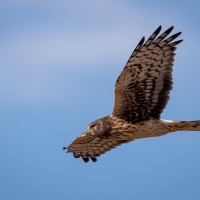 Summer in Maine: From Acadia to the Northwoods CLOSED - See our Monhegan Island tour in September!May 21 - 28, 2025
Summer in Maine: From Acadia to the Northwoods CLOSED - See our Monhegan Island tour in September!May 21 - 28, 2025 -
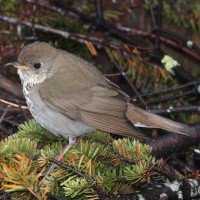 New Hampshire's Mt. Washington Warblers & Bicknell's ThrushJune 4 - 10, 2025
New Hampshire's Mt. Washington Warblers & Bicknell's ThrushJune 4 - 10, 2025 -
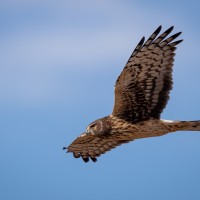 Summer in Maine: From Acadia to the Northwoods FULL - See our May departure!July 6 - 13, 2025
Summer in Maine: From Acadia to the Northwoods FULL - See our May departure!July 6 - 13, 2025 -
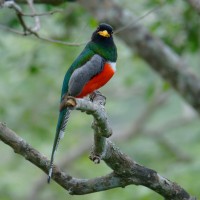 Arizona Monsoon Madness: Birding & Nature in a Season of Wonder!August 2 - 9, 2025
Arizona Monsoon Madness: Birding & Nature in a Season of Wonder!August 2 - 9, 2025 -
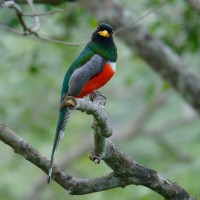 Arizona Monsoon Madness: Birding & Nature in a Season of Wonder!August 17 - 24, 2025
Arizona Monsoon Madness: Birding & Nature in a Season of Wonder!August 17 - 24, 2025 -
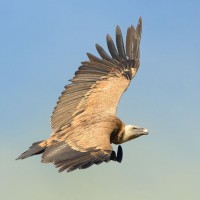 Spain: Birding & NatureSeptember 4 - 16, 2025
Spain: Birding & NatureSeptember 4 - 16, 2025 -
 Western Panama: Tranquilo BayOctober 18 - 25, 2025, w/Mt. Totumas extension
Western Panama: Tranquilo BayOctober 18 - 25, 2025, w/Mt. Totumas extension -
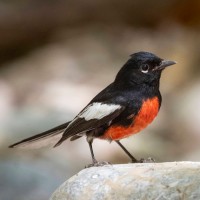 Southeast Arizona: Sky Island Fall SamplerNovember 2 - 9, 2025
Southeast Arizona: Sky Island Fall SamplerNovember 2 - 9, 2025 -
 Costa Rica Birding & NatureJanuary 5 - 12, 2026, w/Pacific Coast extension
Costa Rica Birding & NatureJanuary 5 - 12, 2026, w/Pacific Coast extension -
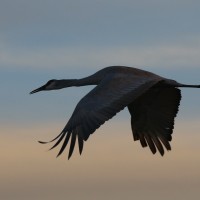 New Mexico: Winter Birds & Grand LandscapesJanuary 18 - 26, 2026
New Mexico: Winter Birds & Grand LandscapesJanuary 18 - 26, 2026
-
Essential Information +
Packing List +
Suggested Reading List +
Useful Links +
Photo credits: Banners: Sandhill Cranes, Hugh Simmons; Taos Mountains, by Kyle Pontius on Unsplash; Black Bison, by Eric Murray on Unsplash; Primary: Pygmy Nuthatch, Brian Calk; View from O'Keefe Home, Lynn Tennefoss; Gadwall, Northern Pygmy Owl; Brian Calk Secondary: Coyote, Greg Smith; Evening Grosbeak, Brian Calk; Sagebrush Sparrow, Brian Calk Gallery: Ferruginuous Hawk, Brian Calk; Bighorn Ram, Brian Calk; Group Photo, Brian Calk; Northern Harrier, Greg Smith; Scenic, Brian Calk; Williamson's Sapsucker, Brian Calk; Juniper Titmouse, by John Duncan on Unsplash Itinerary: American Wigeon, Tom Dove; Wood Duck, Sandy Sorkin; Red-tailed Hawk, Sandy Sorkin; Sandhill Cranes, Greg Smith; Bald Eagles, Sandy Sorkin; ; Sandhill Crane, Peg Abbott; Sunset, Naturalist Journeys Stock; Taos, by Leon Bublitz on Unsplash.





















